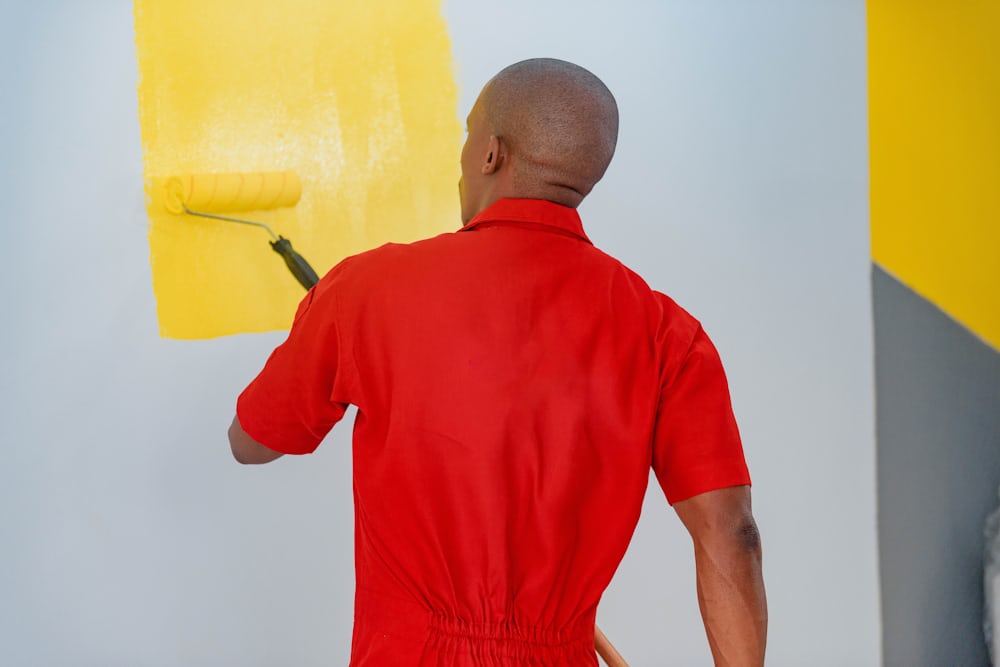Painting the interior of a home or small commercial space can be a transformative process, bringing new life and personality to a space. However, achieving a flawless finish requires more than just selecting the right color. Many common mistakes can lead to streaks, uneven coverage, and premature wear, reducing the impact of the final look. Whether you’re handling a DIY project or working with professionals, knowing what to avoid can make a significant difference in the outcome.
Neglecting Proper Surface Preparation
One of the most common mistakes in interior painting is skipping or rushing through the preparation phase. A clean, smooth surface is essential for paint to adhere properly and look professional.
- Skipping Cleaning: Dust, dirt, and grease prevent paint from adhering correctly. Walls should always be wiped down with a damp cloth or a mild detergent solution before painting.
- Ignoring Patching and Sanding: Cracks, nail holes, and uneven surfaces must be patched and sanded smooth before painting begins. Failing to do so results in an uneven texture that shows through the final coat.
- Forgetting to Prime: While some modern paints include built-in primers, many surfaces still benefit from a dedicated primer coat, especially when covering dark colors or painting on new drywall.
Using Low-Quality Paint and Tools
The quality of the materials used plays a major role in the final results. Opting for cheap paint and brushes can lead to frustration and subpar coverage.
- Choosing the Wrong Paint: Not all paints are created equal. High-traffic areas require more durable finishes such as satin or semi-gloss, while matte finishes are better suited for low-contact spaces.
- Using Inexpensive Brushes and Rollers: Cheap brushes shed bristles, and low-quality rollers can leave lint or streaks in the paint. Investing in quality tools ensures a smoother, more even finish.
- Overloading the Brush or Roller: Applying too much paint at once leads to drips and uneven coverage. It’s better to apply multiple thin coats than a single thick one.
Applying Paint Incorrectly
Even with the best tools and materials, improper painting techniques can ruin the final appearance.
- Not Using the Right Technique: Long, even strokes are essential when using a brush, while a roller should be applied with a consistent “W” or “M” pattern to distribute paint evenly.
- Skipping Edge Work: Cutting in around trim, ceilings, and corners before rolling the main wall prevents noticeable brush marks and ensures seamless transitions.
- Ignoring Drying Times: Rushing to apply a second coat before the first one is completely dry can result in peeling and streaking. Always follow the drying times recommended on the paint can.
Choosing the Wrong Color or Finish
A color that looks perfect on a sample card may not translate the same way once applied to an entire wall. Making thoughtful decisions about color and finish prevents costly repaints.
- Not Testing Samples: Colors appear different under various lighting conditions. Testing paint samples in different areas of a room at different times of day ensures the right choice.
- Ignoring the Role of Sheen: Higher sheen levels (semi-gloss, gloss) are more durable but also highlight imperfections. Matte and eggshell finishes help conceal flaws but are harder to clean.
- Using Too Many Colors in One Space: While contrast can be visually appealing, too many colors in one room can feel chaotic. A cohesive palette creates balance and flow.
Failing to Protect Surrounding Areas
Painting can get messy, and failing to protect furniture, floors, and fixtures leads to unnecessary cleanup.
- Not Using Drop Cloths: Drips and splatters are inevitable. Covering floors and furniture with drop cloths prevents stains and damage.
- Skipping Painter’s Tape: Clean, sharp edges require painter’s tape to protect trim, ceilings, and baseboards from accidental brush strokes.
- Leaving Fixtures and Hardware Exposed: Light switches, outlet covers, and doorknobs should be removed or carefully masked to keep paint off non-painted surfaces.
Underestimating the Importance of Ventilation
Paint fumes can be strong and potentially harmful, making proper ventilation essential.
- Painting in a Closed Room: Keeping windows open and using fans helps circulate air and speeds up drying time.
- Ignoring Safety Precautions: Some paints contain chemicals that can cause dizziness or irritation. Wearing a mask when using strong-smelling paints or working in enclosed spaces can prevent discomfort.
Overlooking Maintenance and Touch-Ups
Even after a successful paint job, maintaining walls ensures their beauty lasts for years.
- Not Allowing Paint to Cure Fully: Freshly painted walls need time to fully cure before heavy cleaning or exposure to excessive moisture.
- Ignoring Touch-Ups: Minor scuffs and scratches are inevitable. Keeping a small amount of leftover paint on hand allows for quick fixes.
- Skipping Regular Cleaning: Dust and dirt buildup can dull the vibrancy of painted walls. A gentle wipe-down with a damp cloth maintains their fresh look.
Hiring Professionals for the Best Results
While many homeowners attempt DIY painting, professional painters bring expertise and precision that can be hard to achieve on your own. From selecting the right paint to ensuring a flawless finish, experienced painters handle the details that make a difference.
Green Diamond Painting understands the importance of high-quality results, offering professional services that ensure a beautifully painted interior with lasting durability. Whether refreshing a single room or transforming an entire space, the right approach to painting makes all the difference.
Conclusion
Painting is more than just applying color to walls—it’s a process that requires careful planning, the right materials, and proper techniques. Avoiding common mistakes ensures that a paint job looks professional, lasts longer, and enhances the overall appeal of a home or business. By focusing on preparation, using quality tools, applying paint with care, and maintaining painted surfaces properly, anyone can achieve a stunning, long-lasting result.
Read More : How Seasonal Changes Affect Basement Foundations!
